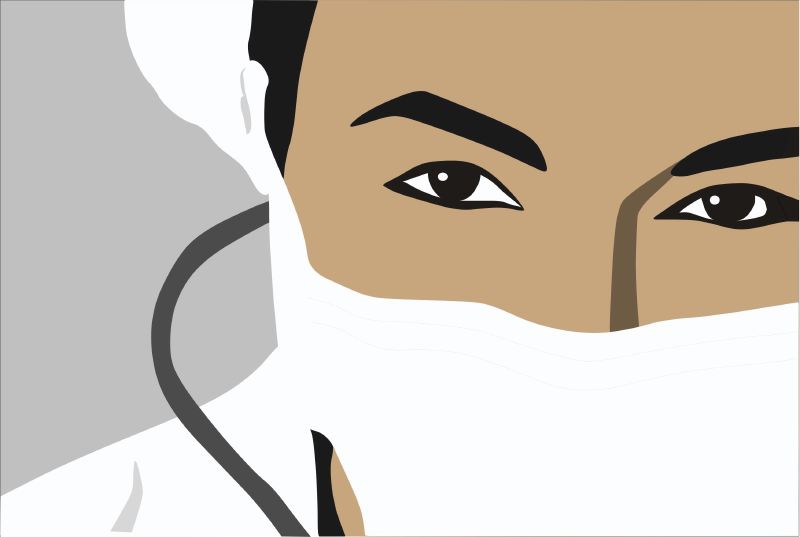
A bully is a bully … even if he/she is wearing a long white coat and carrying a stethescope. — Richard Kelly, M.D.
There is no consensus definition of bullying, but an operational one in a recent study was: “a situation where one or several individuals persistently over a period of time perceive themselves to be on the receiving end of negative actions from one or several persons”; such interactions usually involve a power differential.
It typically encompasses a range of negative behaviors, including verbal abuse, humiliation, intimidation, and even physical threats, all directed towards colleagues, students, or subordinates in the medical field.
Bullying in medicine, often referred to as “horizontal violence” is an alarmingly pervasive issue within healthcare, be it industry, government-funded, or academic.
Clearly, not all unprofessional conduct involves bullying, but the lack of a standard definition has made it hard to assess its prevalence with confidence.
Definition: “a situation where one or several individuals persistently over a period of time perceive themselves to be on the receiving end of negative actions from one or several persons”; such interactions usually involve a power differential.
Bullying in medicine is more common than one might think. A report from the Joint Commission indicates that bullying in the healthcare workplace is more common than sexual harassment and is initiated by both men and women.
Several studies have shed light on its prevalence which appears to vary by country, specialty, level of training, and other factors, ranging from about 5-95%.
A 2023 systematic review and meta analysis, which included >44,000 participants, estimated the bullying prevalence in medical residents at 51%. In another study, both surgical residents and faculty reported being bullied in about 40% of respondents to a survey published in JAMA Surgery, but nearly 60% of respondents said that they witnessed bullying.
Senior doctors are not immune to being bullied, with up to 50% of specialists reporting bullying events at least once a week in a 2017 paper.
A 2020 BMJ Open systematic review of bullying in academic bullying in medical settings found that specialists (consultants) were the most common bullies identified (53.6%), men were identified as the most common perpetrators (67.2%) and women the most common victims (56.2%). Only a minority of victims (28.9%) reported the bullying.
While medicine is a noble profession dedicated to patient care, the presence of bullying can have detrimental effects on both healthcare professionals and patient outcomes.
The most commonly described consequences of bullying are:
The most commonly described consequences of bullying are feeling burned out, worsened performance, depression, increased medical errors, and higher staff turnover.
Several factors contribute to the persistence of bullying in medicine:
1. Hierarchy and power imbalance: The hierarchical structure of healthcare institutions can foster an environment where those in positions of power can exert control over subordinates, making them vulnerable to bullying.
2. High-stress environment: The demanding nature of the medical profession, with long hours, life-and-death decisions, and heavy workloads, can exacerbate tension and lead to interpersonal conflicts.
3. Lack of reporting mechanisms: Many healthcare organizations lack effective reporting mechanisms or support systems for addressing workplace bullying, leaving victims with limited recourse. And as noted above far more doctors and students have witnessed or experienced bullying than reported it.
4. Lack of enforcement of institutional policies: Most organizations have good policies, but enforcement is key, and bullying can be hard to “prove” especially when careers and reputations are on the line. Even when bullying is reported, it takes a brave organization to tackle a prominent, successful, high-earning/famous/well-connected senior bully.
5. Cultural Norms: Some institutions may have a culture that tolerates or normalizes aggressive behavior as a means of toughening up new healthcare professionals. Medicine itself can have a culture of bullying, particularly in more traditional medical organizations.
Addressing bullying in medicine requires a multifaceted approach:
1. Education and awareness: Healthcare organizations should implement educational programs and raise awareness about bullying’s harmful effects. This includes training healthcare professionals and leaders to recognize and prevent bullying behavior.
2. Reporting mechanisms: Robust reporting systems should be established, ensuring confidentiality and protection against retaliation for those reporting incidents of bullying.
3. Support and counseling: Healthcare institutions should offer support services, such as counseling and peer support groups, to help victims cope with the emotional toll of bullying.
4. Leadership accountability: Healthcare leaders must set a zero-tolerance policy for bullying and lead by example, promoting respectful and professional behavior within their institutions.
5. Culture change. All of medicine needs to shift towards improved self-awareness (our own behaviors), compassion and collaboration (organizational ways of working) and zero tolerance of bad behavior (organizational mechanisms).
Bullying in medicine is a pervasive issue that has far-reaching consequences for healthcare trainees and professionals and, ultimately, patient care.
Recognizing its prevalence and understanding its impact is the first step towards addressing this problem. By implementing proactive measures, such as education, reporting mechanisms, and support services, healthcare organizations can create a safer and more respectful work environment for all, ensuring that the noble profession of medicine lives up to its core values of compassion and care.
Efforts to combat bullying in medicine are not just about improving the lives of healthcare workers but also about enhancing the quality and safety of healthcare for all patients.
What are your solutions? We would love to hear from you!
